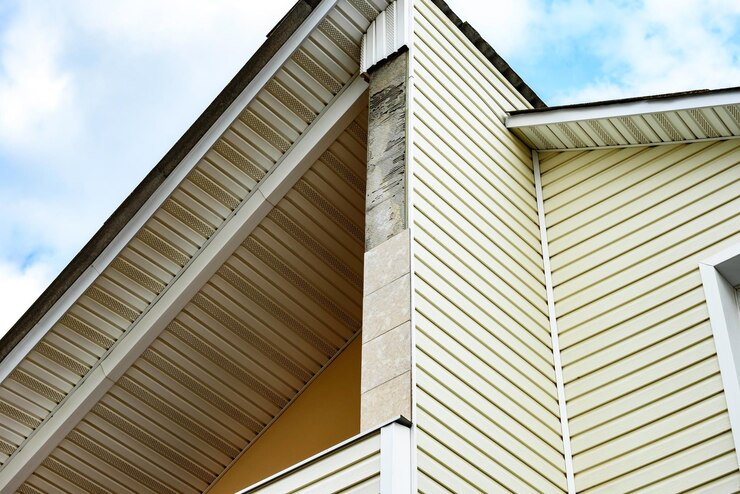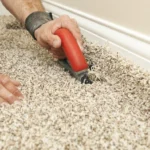When it comes to home improvements, few choices have as significant an impact as the siding you select for your home. Siding not only enhances your home’s aesthetic appeal but also plays a vital role in protecting it from the elements. In the Bay Area, where the climate can be quite varied, selecting the right siding material is essential. Hardie siding, known for its durability and aesthetic versatility, has become a popular choice for homeowners in the Bay Area. This article explores why Hardie siding is a top choice, how to choose the best Bay Area Hardie siding experts, and the benefits of installing Hardie siding on your home.
What is Hardie Siding?
Hardie siding, also known as James Hardie siding, is a brand of fiber cement siding that has gained widespread popularity due to its long-lasting performance and variety of styles. Made primarily from a mix of sand, cement, and cellulose fibers, Hardie siding is resistant to a variety of external factors, including fire, rot, and pests. It is also an excellent choice for homeowners looking for energy-efficient solutions due to its insulating properties.
Hardie siding comes in several styles, including plank, shingle, board-and-batten, and panel options, allowing homeowners to choose a look that suits their tastes and complements their home’s architecture. With a vast array of colors and finishes available, Hardie siding offers both protection and beauty.
Why Choose Hardie Siding for Your Bay Area Home?
The Bay Area is known for its unique climate, ranging from foggy coastal weather to warm, sunny inland areas. Choosing siding that can stand up to these varying conditions while offering long-term protection is crucial. Hardie siding checks all the boxes for Bay Area homeowners looking for durability, energy efficiency, and aesthetic appeal.
1. Durability and Longevity
One of the main reasons homeowners in the Bay Area opt for Hardie siding is its durability. The Bay Area experiences a mix of harsh weather conditions, including rain, wind, and occasional heat waves. Hardie siding’s resistance to moisture, high temperatures, and even salt from coastal air makes it an ideal choice for homes in the area. It is highly resistant to cracking, warping, and swelling, even in extreme weather conditions, ensuring your home remains protected for years to come.
2. Fire Resistance
In California, the threat of wildfires is a significant concern, especially in the Bay Area’s dry summers. Hardie siding is fire-resistant, providing an extra layer of protection against the spread of flames. This feature can be invaluable in regions where fire danger is high, offering peace of mind for homeowners and added safety for the home.
3. Low Maintenance
One of the benefits of Hardie siding is its low maintenance requirements. Unlike wood siding, which can rot and warp over time, Hardie siding is not susceptible to these issues. It does not require frequent painting or sealing and is resistant to pests like termites, making it a hassle-free option for homeowners who want to minimize maintenance while ensuring their home stays protected.
4. Aesthetic Versatility
Hardie siding is available in a wide variety of styles, textures, and colors, allowing homeowners to choose the perfect look for their home. Whether you prefer the sleek lines of HardiePlank lap siding or the charming appearance of HardieShingle siding, there is an option to suit every taste and architectural style. Additionally, the wide range of color choices ensures you can find the ideal match for your home’s exterior design.
5. Energy Efficiency
Hardie siding offers significant energy-saving benefits. Its insulating properties help regulate your home’s temperature, keeping it cooler in the summer and warmer in the winter. This not only enhances comfort but can also reduce energy costs, making it a wise investment for homeowners seeking to lower their utility bills while improving their home’s overall performance.
Choosing the Right Bay Area Hardie Siding Experts
When it comes to installing Hardie siding on your Bay Area home, selecting the right professionals is key to ensuring a successful and seamless project. Here’s how to choose the best Hardie siding experts for your needs.
1. Experience and Expertise
The installation of Hardie siding requires specialized knowledge and skill to ensure the job is done correctly. Look for contractors who are certified by James Hardie as preferred installers. This certification indicates that the contractor has undergone the necessary training and adheres to the manufacturer’s best practices, which helps ensure a high-quality installation.
2. Local Knowledge
The Bay Area’s diverse climate and varying environmental conditions require a contractor who understands the specific challenges of siding installation in this region. A local Hardie siding expert will be familiar with the local weather patterns, environmental conditions, and building codes, ensuring that your siding is installed correctly to stand up to the unique demands of the Bay Area.
3. Reputation and Reviews
Take the time to research the contractor’s reputation in the community. Check online reviews and ask for references from past clients to get a sense of the quality of work and customer service you can expect. A well-established contractor with a strong reputation is more likely to deliver a satisfactory experience.
4. Portfolio of Completed Projects
Ask potential contractors to provide a portfolio of previous Hardie siding projects they have completed. This will give you an idea of the quality of their workmanship and the variety of homes they have worked on. A contractor with a diverse portfolio is likely to be more versatile and capable of handling your specific needs.
5. Warranty and Insurance
Ensure the contractor offers warranties for their work and is fully insured. A reputable contractor will stand behind their work and be committed to providing high-quality service. Additionally, proper insurance coverage protects you from liability in case of accidents or damage during the installation process.
The Hardie Siding Installation Process
The installation of Hardie siding requires careful preparation, professional skills, and attention to detail. Here’s an overview of the installation process.
1. Initial Consultation and Estimate
The process typically begins with an initial consultation, where the contractor will assess your home’s exterior and discuss your design preferences. They will measure your home and provide an estimate for the cost of materials and installation. During this phase, you can also ask questions about the product options, installation timeline, and warranty.
2. Material Selection
Once you’ve agreed on the estimate, you’ll select the type of Hardie siding that best suits your needs. The contractor will help you choose the right style and color, taking into account your home’s architecture and the local climate.
3. Preparation and Installation
Before installing the siding, the contractor will prepare the area by removing any old siding and repairing the underlying structure if necessary. They will ensure that the surface is properly cleaned and prepped for the new Hardie siding. Installation involves securing the Hardie boards to the house’s framework, making sure they are aligned correctly and tightly fastened.
4. Finishing Touches
Once the siding is installed, the contractor will finish the job by caulking seams, installing trim pieces, and ensuring that everything is sealed correctly to prevent moisture infiltration. Finally, the contractor will conduct a thorough inspection to make sure that the siding is installed according to manufacturer specifications.
5. Final Inspection and Cleanup
After the installation is complete, the contractor will perform a final inspection to ensure the job meets all standards. They will also clean up the site, removing any debris and leaving your property looking pristine.
Costs of Installing Hardie Siding in the Bay Area
The cost of installing Hardie siding can vary depending on several factors, including the size of your home, the type of siding you choose, and the complexity of the installation. On average, the cost of Hardie siding installation in the Bay Area ranges between $10,000 and $25,000, including materials and labor.
While the upfront cost may seem high, Hardie siding is a long-term investment that can add value to your home and reduce maintenance costs over time. The durability and low maintenance requirements make Hardie siding a cost-effective option for homeowners looking for lasting performance.
FAQs
Q1: Is Hardie siding a good choice for Bay Area homes?
Yes, Hardie siding is an excellent choice for Bay Area homes due to its durability, fire resistance, and ability to withstand the region’s diverse climate conditions.
Q2: How long does Hardie’s siding last?
Hardie siding is known for its longevity, with an expected lifespan of 25 to 50 years, depending on factors such as climate and maintenance.
Q3: Can I install Hardie siding myself?
While DIY installation is possible, it is highly recommended to hire a professional to ensure proper installation and avoid potential issues.
Q4: What is the cost of Hardie siding installation in the Bay Area?
The average cost of Hardie siding installation in the Bay Area ranges from $10,000 to $25,000, depending on the size of the home and the type of siding.
Q5: Does Hardie siding require a lot of maintenance?
No, Hardie siding is low-maintenance and resistant to pests, rot, and weather damage. Regular cleaning is typically all that’s needed to keep it looking great.
Conclusion
Hardie siding is a fantastic choice for homeowners in the Bay Area looking for a durable, low-maintenance, and aesthetically pleasing option for their homes. With its long lifespan, fire resistance, and versatility in design, Hardie siding continues to be a top choice for exterior home improvements. By working with the best Bay Area Hardie siding experts, you can ensure a seamless installation process and enjoy the long-term benefits of this high-quality product. Whether you’re renovating your home or building a new one, Hardie Siding provides the perfect solution for maintaining beauty, safety, and energy efficiency in your home.










 /home/u448362301/domains/theexpotab.com/public_html/wp-content/themes/foxiz/templates/popup.php on line 167
/home/u448362301/domains/theexpotab.com/public_html/wp-content/themes/foxiz/templates/popup.php on line 167